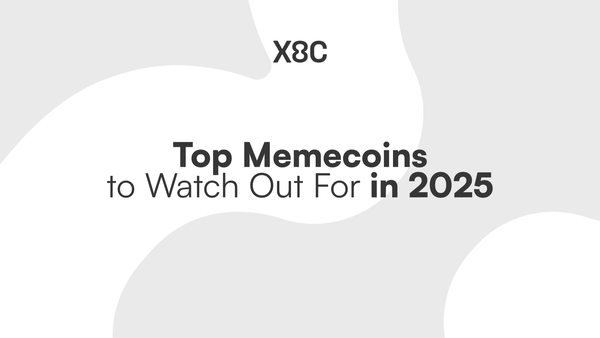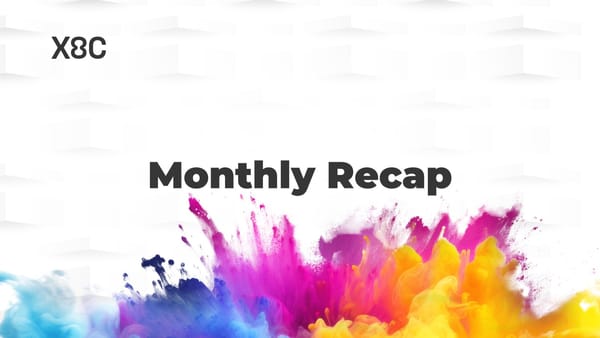RWAs and Institutional Adoption of Crypto Powering the Next Generation of Web3 Users

The landscape of Web3 is undergoing a transformative shift—moving beyond speculation of digital assets toward a future anchored in tangible value. At the forefront of this evolution are Real World Assets (RWAs) and institutional adoption, two forces reshaping how we think about blockchain technology and its practical applications.
With their powers combined, RWAs and institutional adoption of crypto have the potential to power the next generation of Web3 users.
The Rise of Real World Assets in Web3
Real World Assets represent a crucial bridge between traditional finance and the digital frontier. By tokenising physical assets like real estate, commodities, and infrastructure, RWAs are bringing unprecedented liquidity and accessibility to previously illiquid markets.
This isn't just theoretical—we're seeing significant traction in two main areas:
Real Estate Tokenisation
Property ownership, traditionally burdened by high barriers to entry and limited liquidity, is being democratised through blockchain technology. Investors can now purchase fractional ownership in premium real estate, with smart contracts automating rental distributions and property management processes.
This opens up real estate investment to a broader audience while maintaining the security and tangibility of traditional property ownership.
Supply Chain Finance
The tokenisation of trade receivables and inventory is revolutionising supply chain finance. Small and medium-sized enterprises can now access working capital more efficiently by tokenising their assets, while investors gain access to a new class of yield-generating opportunities backed by real-world commercial activity.
Institutional Adoption: From Skeptics to Advocates
The entry of traditional financial institutions (TradFi) into crypto markets has also helped spearhead Web3's maturation. The more that banks and other bureaucratic entities see and believe in the benefits of blockchain, the more their participation will encourage other industries, businesses, and individuals to do the same.
UItimately, it will be demonstrating “what can blockchain do for you” versus talking about what the tech is, that threads the needle for the next generation to adopt Web3.
For example, major banks and financial institutions are developing robust custody solutions for digital assets, addressing one of the primary concerns that previously kept institutional investors on the sidelines. These solutions combine the security requirements of traditional finance with the innovation of blockchain technology, leading to faster, more verified transactions. Again, the more the institutional use cases can demonstrate blockchains benefits, the greater the chance of widespread adoption.
The increasing involvement of established financial institutions will also help drive regulatory clarity. As these organisations engage with regulators, we're seeing the emergence of clearer frameworks that make it easier for both institutions and retail investors to participate in the Web3 ecosystem.
The Network Effect: How RWAs and Institutional Adoption Feed Each Other
The relationship between RWAs and institutional adoption subscribes to the mechanism of “one hand feeds the other” in a very symbiotic manner.
The more RWAs successfully adopt crypto, the more successful use cases exist—signalling to the institutions that blockchain technology is legitimate, which then increases institutional adoption.
Institutional involvement leads to better infrastructure, making it easier to tokenise and manage RWAs. The combination of institutional capital and RWAs creates deeper, more liquid markets, and the presence of familiar, tangible assets helps institutions better understand and manage their crypto exposure.
The convergence of RWAs and institutional adoption of crypto is creating a new class of Web3 users who are less interested in speculation and more focused on practical applications.
These users are attracted by familiar value propositions, like the ability to invest in known, tangible assets and professional management—both of which make Web3 more approachable and instill greater confidence in users themselves.
The more RWAs can demonstrate concrete benefits of blockchain technology beyond cryptocurrency trading, the easier it will be for adoption to occur for both institutions and retail investors.
Web3 Users: The Next Generation
As we move forward into the new year, the combination of RWAs and institutional adoption will likely continue to drive Web3 adoption in several ways:
Financial Inclusion: Improved access to investment opportunities for a broader range of participants.
Market Maturation: More sophisticated financial products and services.
Infrastructure Development: Better tools and platforms for managing digital assets.
Regulatory Evolution: Clearer frameworks for digital asset management and trading.
The future of Web3 is increasingly looking less like a parallel financial system and more like an enhancement of existing financial infrastructure. Through the dual forces of RWA tokenisation and institutional adoption, we're witnessing the emergence of a more accessible, efficient, and practical blockchain ecosystem.
Curious on how blockchain marketing can benefit your Web3 project? Check out X8C and discover how our team of Web3 growth experts can elevate your project today.





